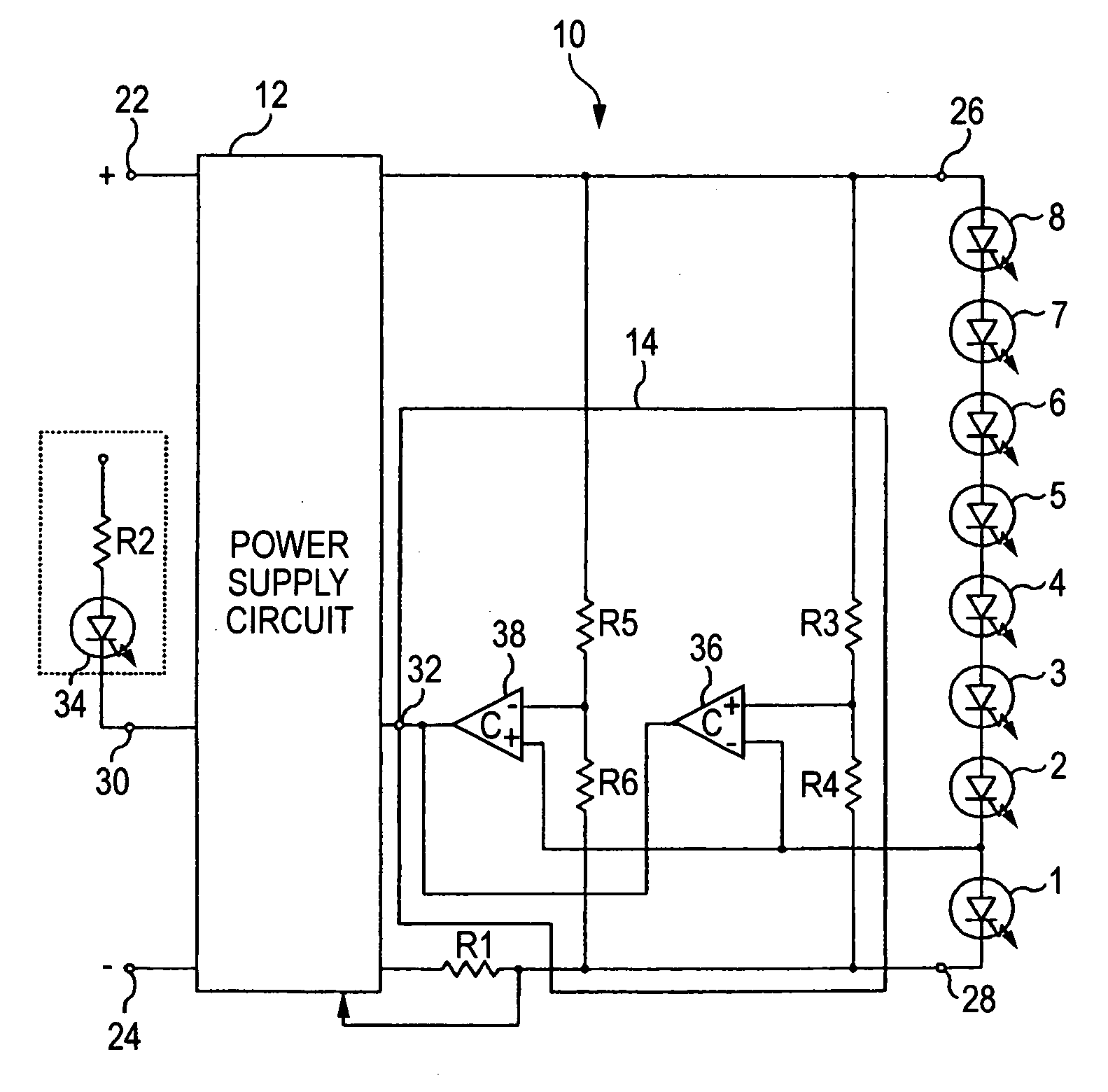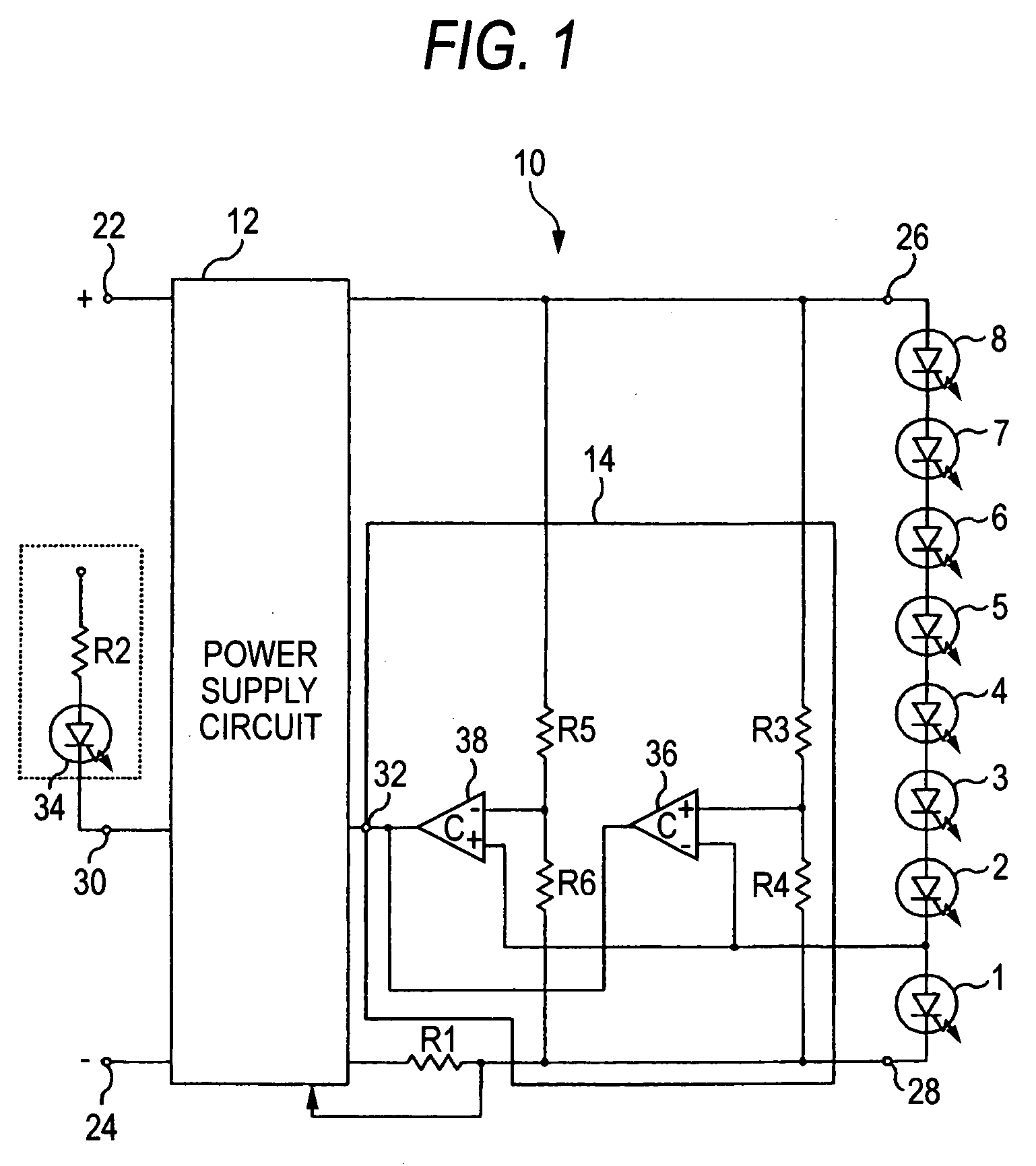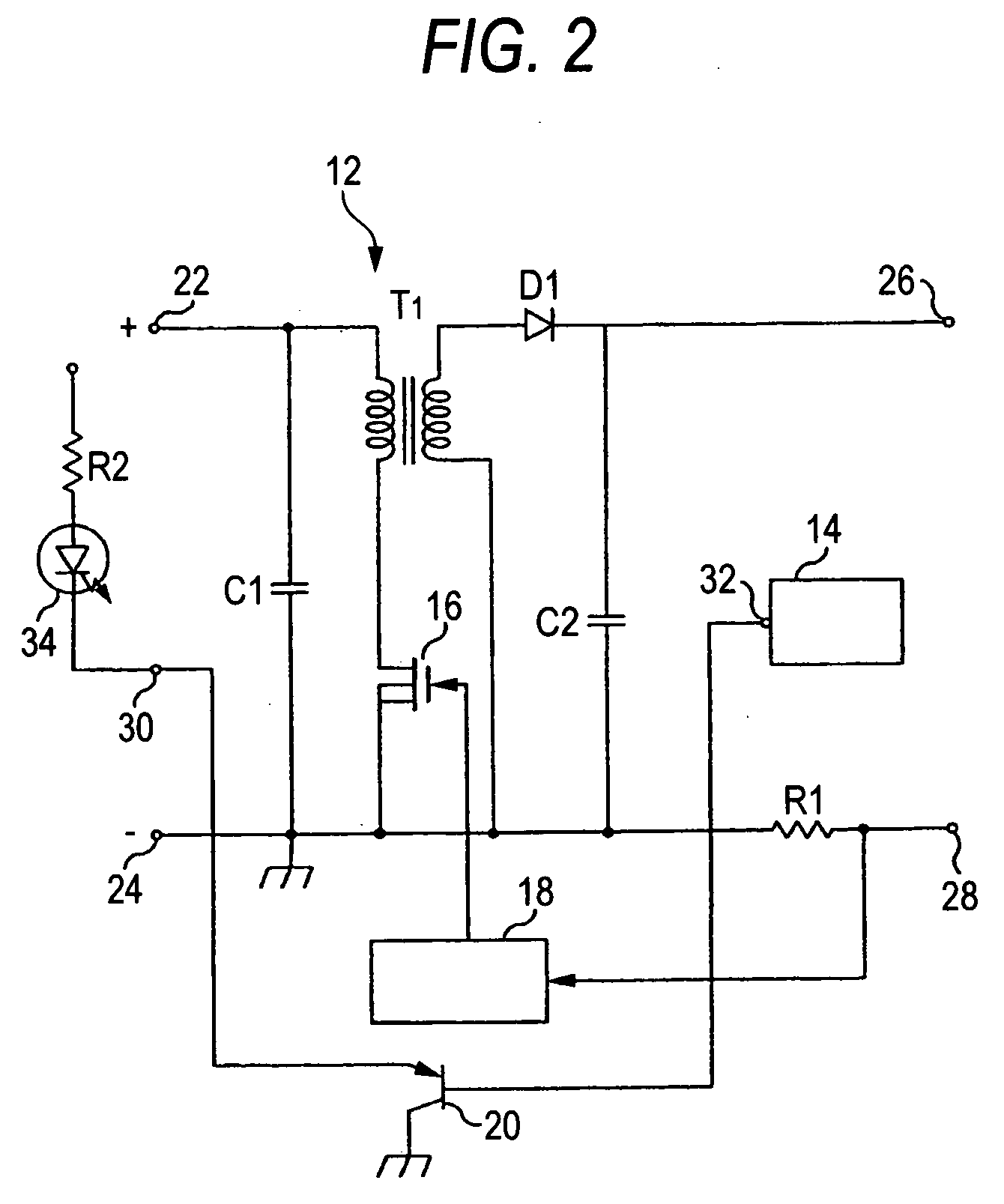Lighting control circuit for vehicle lighting fixture
a technology for controlling circuits and lighting fixtures, applied in process and machine control, electric devices, instruments, etc., can solve problems such as power consumption, failure of attempt inability to detect wire breakage, so as to simplify circuit configuration, reliably detect faults, and reliably detect faults
- Summary
- Abstract
- Description
- Claims
- Application Information
AI Technical Summary
Benefits of technology
Problems solved by technology
Method used
Image
Examples
second embodiment
[0059] Next, the invention will be described in accordance with FIG. 3. This embodiment includes a fault detection circuit 40 in place of the fault detection circuit 14. The remaining configuration is the same as that shown in FIG. 1.
[0060] The fault detection circuit 40 makes relative comparison between a voltage applied to the whole of the LEDS 1 through 8 and part of the LEDs 1 through 8 (LED 1) as well as making relative comparison between a voltage applied the part of the LEDs 1 through 8 (LED 1) and a voltage applied to other part of the LEDs different from the part of the LEDS (LED 1) to detect a fault in any one of the LEDs 1 through 8 based on the result of the comparison.
[0061] In particular, the fault detection circuit 40 has resistors R3, R4 and a comparator 36 as well as resistors R7, R8, R9, R10 and a differential amplifier 42 and a comparator 44. The resistors R3 and R4 divides the voltage applied to the whole of the LEDs 1 through 8 and applies the obtained voltage ...
third embodiment
[0066] Next, the invention will be described in accordance with FIG. 4. This embodiment includes a fault detection circuit 46 in place of the fault detection circuit 14. The remaining configuration is the same as that shown in FIG. 1.
[0067] The fault detection circuit 46 makes relative comparison between a voltage applied to the whole of the LEDs 1 through 8 and a voltage applied to part of the LEDs (LED 1) as well as making relative comparison between a voltage applied to part of the LEDs (LED 1) and a set voltage (comparison between absolute values) to detect a fault in any one of the LEDs 1 through 8 based on the result of the comparison.
[0068] In particular, the fault detection circuit 46 has resistors R3, R4 and comparators 36, 37 and a power supply 50.
[0069] The resistors R3 and R4 are set to the same resistance values as those in FIG. 1. The comparator 36 makes relative comparison between a voltage applied to the whole of the LEDs 1 through 8 and a voltage applied across th...
fourth embodiment
[0073] Next, the invention will be described in accordance with FIG. 5. This embodiment includes a fault detection circuit 52 in place of the fault detection circuit 14 and uses the most upstream LED 8 as a target of fault detection in place of the LED 1. The remaining configuration is the same as that shown in FIG. 1.
[0074] The fault detection circuit 52 makes relative comparison between a voltage applied to the whole of the LEDs 1 through 8 and a voltage applied to part of the LEDs (LED 8) as well as making relative comparison between a voltage applied to part of the LEDs (LED 8) and a set voltage (comparison between absolute values) to detect a fault in any one of the LEDs 1 through 8 based on the result of the comparison.
[0075] In particular, the fault detection circuit 52 has resistors R5, R6, comparators 38, 54 and a power supply 50.
[0076] The resistors R5 and R6 are set to the same resistance values as those in FIG. 1. A voltage divided by the resistors R5, R6 is applied to...
PUM
 Login to View More
Login to View More Abstract
Description
Claims
Application Information
 Login to View More
Login to View More - R&D
- Intellectual Property
- Life Sciences
- Materials
- Tech Scout
- Unparalleled Data Quality
- Higher Quality Content
- 60% Fewer Hallucinations
Browse by: Latest US Patents, China's latest patents, Technical Efficacy Thesaurus, Application Domain, Technology Topic, Popular Technical Reports.
© 2025 PatSnap. All rights reserved.Legal|Privacy policy|Modern Slavery Act Transparency Statement|Sitemap|About US| Contact US: help@patsnap.com



